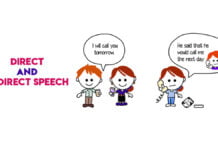Character descriptions are often the first way one starts to gather together their understanding of people. The most basic character descriptions usually centre around physical details. Physical attributes are the first thing one notices about a person before we’ve had the opportunity to speak to them. Literature is a non-visual medium, so having a vivid and evocative physical description can help paint a picture of a character in the minds of readers before one attempt to more detail about the character’s personality. Physical descriptions may seem surface-level, but they’re the first step toward character development.
Talking about how someone looks is complicated for a couple of reasons. First of all, describing someone’s appearance can seem a little rude, even if you’re trying to say something nice. People don’t like to feel objectified (made to feel like an object instead of a person), so it’s important to always keep physical descriptions very positive. However, if you’re talking with people that you don’t know very well, it’s probably best to avoid describing a person’s appearance entirely. Using general descriptions will help to describe someone without having to go into specific details. For example, you can describe someone’s appearance by talking about their gender, height, weight, age, hair colour, or eye colour. However, remember that some people can be sensitive about these descriptions (especially weight and age), so keep this in mind when you need to describe people.
Writers who are still developing their craft often give a ‘laundry list’ description. This is where a character’s physical attributes appear in a list, such as:
She had green eyes, long, tawny hair, a scruffy tracksuit that was stained, and a loud laugh.
A large part of learning how to describe a person convincingly shows what makes them unique or distinctive. A master of characterization in English Literature is the Victorian author Charles Dickens. Dickens describes the schoolmaster Thomas Gradgrind, ‘a man of facts and calculations’ in his novel Hard Times thus:
The emphasis was helped by the speaker’s mouth, which was wide, thin, and hard set. The emphasis was helped by the speaker’s voice, which was inflexible, dry, and dictatorial. The emphasis was helped by the speaker’s hair, which bristled on the skirts of his bald head, a plantation of firs to keep the wind from its shining surface, all covered with knobs, like the crust of a plum pie, as if the head had scarcely warehouse-room for the hard facts stored inside.
Although Dickens describes the character’s hair, he uses a striking visual metaphor (a plantation of firs). This leads quickly back to a description showing the schoolmaster’s fact-obsessed nature (…as if the head had scarcely warehouse-room for the hard facts stored inside).
Figurative language such as simile (comparing objects using like or as though) and metaphor (stating two, unlike objects, are the same) is effective for describing subtle precise qualities and appearances. For example:
His dopey expression made him look as though he was always half sedated.
Her thin, uptight mouth was a door on a latch, poised to shut fast at any sign of trouble or disagreement and stay that way ’til the coast was clear.
The first example (simile) conveys a character’s sleepy, befuddled appearance. The second (a metaphor) gives us associations by stating one thing is another. The stand-in object (the latched door) tells us something about the first, the character’s mouth (in this case, the image suggests a mistrustful and conflict-averse person).
It’s important to learn how to describe someone’s physical features, but it’s even more important to learn how to describe someone’s personality. A character’s hair or eye colour doesn’t tell the reader much. Personalities are complex, making them difficult to put into words. Nonetheless, there are plenty of great ways to describe someone’s personality and character traits. Here’s Dostoevsky describing his character Katerina Ivanova (who has tuberculosis) in Crime and Punishment:
‘Katerina Ivanovna had just begun, as she always did at every free moment, walking to and fro in her little room from window to the stove and back again, with her arms folded across her chest, talking to herself and coughing.’
Dostoevsky conveys the fraught mental state of his character as well as her restless nature. The coughing is a reminder of her life-threatening condition. The fact she continues to pace despite her discomfort suggests her determination.
One way to vary your character descriptions is to drop in descriptive details during actions. A narrating character’s in-the-moment perception of another character’s actions drops in descriptive elements. It also, at the same time, reveals a little about the observer. Thus describing a characters’ body language and gestures is an important part of bringing characters to life. A character’s movement, body language and gestures can describe a lot about their personality and psychological state too. In the example from Dostoevsky above, Katerina Ivanovna’s anxious pacing conveys her mounting fear over her husband (who drinks away from the little money they have). Practising each element of physical description along with using movement and gesture will help to give characters authentic-feeling depth.
When describing characters, think about the small contradictions and inconsistencies people often contain. Internal contradictions make many characters fascinating because they show human complexity. The tough talker has a soft side they reveal to a select few. The anxious worrier reveals surprising strength at a pivotal moment. In A A Milne’s beloved children’s classic, Winnie-the-Pooh, the character Piglet is full of fear yet he accompanies his friend on a daring mission to spy a ‘Heffalump’ (a fearful monster of their imagining).
To learn how to describe a person brilliantly, collect strong character descriptions. Read authors who are particularly noted for their characters. Russian authors such as Anton Chekhov (along with the likes of Dickens) are good examples. For example, here is Chekhov describing his character Mihail Petrovitch Zotov, an old man, in his story The Dependents:
Mihail Petrovitch Zotov, a decrepit and solitary old man of seventy, belonging to the artisan class, was awakened by the cold and the aching in his old limbs […] Zotov cleared his throat, coughed, and shrinking from the cold, got out of bed. In accordance with years of habit, he stood for a long time before the ikon, saying his prayers […]. To whom those names belonged he had forgotten years ago, and he only repeated them from habit.
Chekhov conveys the age of his character well via his aching with the cold as well as his patchy memory.
It’s easier to describe characters comprehensively when you have character sketches to crib from. Following are only some of the details to draft with a fuller portrait of each character in your mind’s eye-
- Biography (Where were they born? What is their occupation? What were the most formative experiences in their life?)
- Interests
- Goals
- Fears
- Strengths
- Flaws
Real-life conversations are far more nuanced than a word list and definitions. As a rule of thumb, using positive adjectives to describe a person typically steers the conversation in a better direction.
Adjectives for Appearance: Positive
- Gorgeous
- Beautiful
- Pretty
- Handsome
- Attractive
- Nice
- Stunning
- Good-looking
- Cute
Adjectives for Appearance: Neutral and Negative
- Muscular
- Strong
- Weak
- Slim
- Short
- Tall
- Fat
- Thin
- Lanky
- Overweight
- Obese
- Stout
- Stocky
- Big-boned
- Curvy
- Slender
- Petite
- Plain
Adjectives for Personality: Positive
- Affectionate
- Ambitious
- Witty
- Thoughtful
- Brave
- Bright
- Sensible
- Charming
- Happy
- Sincere
- Sympathetic
- Open-minded
- Compassionate
- Courageous
- Friendly
- Generous
- Honest
- Proactive
- Polite
- Reliable
Adjectives for Personality: Neutral and Negative
- Quiet
- Aggressive
- Arrogant
- Bossy
- Cruel
- Close-minded
- Dishonest
- Greedy
- Rude
- Selfish
- Unhappy
- Untrustworthy
- Boring
Here are a few example phrases to describe a person in English:
- We look very ______.
- He/She is very ______.
- I think they are ______.
- I hope you don’t mind me saying so, but you are very ______.
- Hopefully, you don’t take this the wrong way, but I think you’re ______.
- I don’t mean to sound rude, but you look very ______.
But while speaking to someone directly about their appearance, it’s polite to begin your statement with one of the underlined phrases above. This is especially true if you’re discussing negative traits. These phrases will let the other person know that you’re not trying to be rude or unpleasant. Ultimately, the only way to master these words is to practice using them in live conversations and getting effective feedback.





























